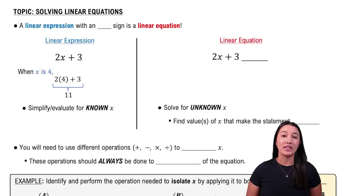Find the magnitude and direction angle for each vector. Round angle measures to the nearest tenth, as necessary.
〈5, 7〉
 Verified step by step guidance
Verified step by step guidance Verified video answer for a similar problem:
Verified video answer for a similar problem:



 3:48m
3:48mMaster Introduction to Vectors with a bite sized video explanation from Patrick
Start learning